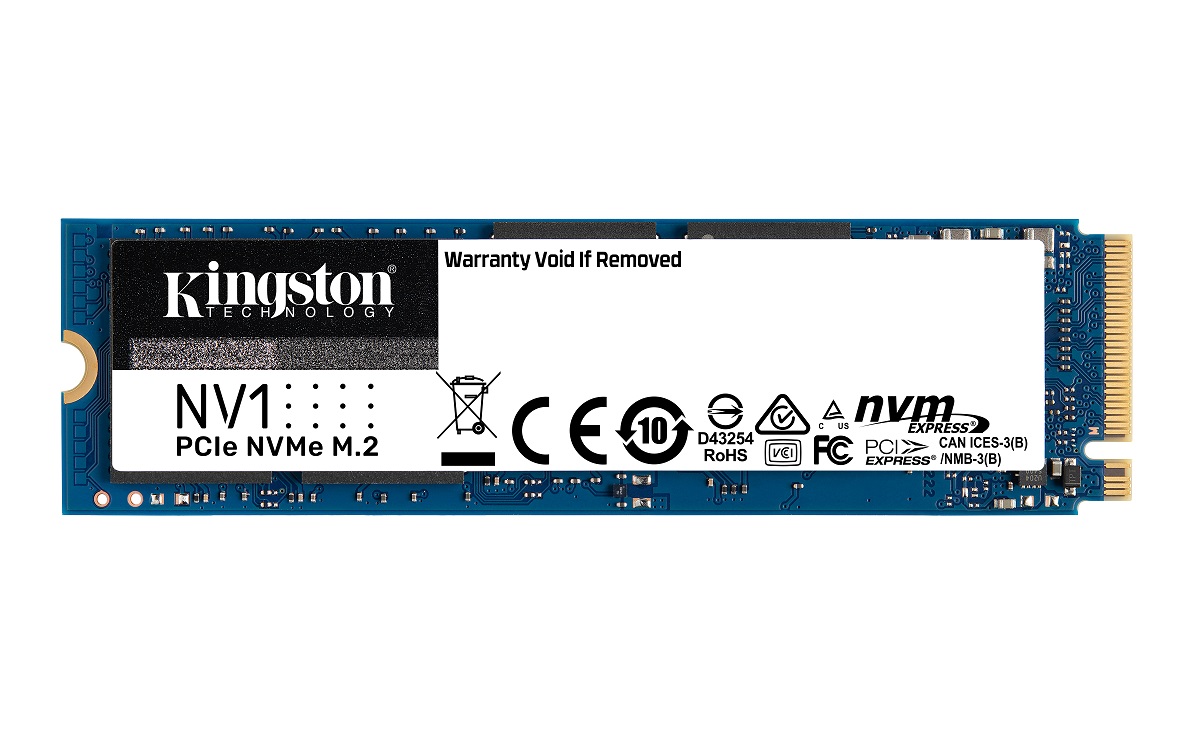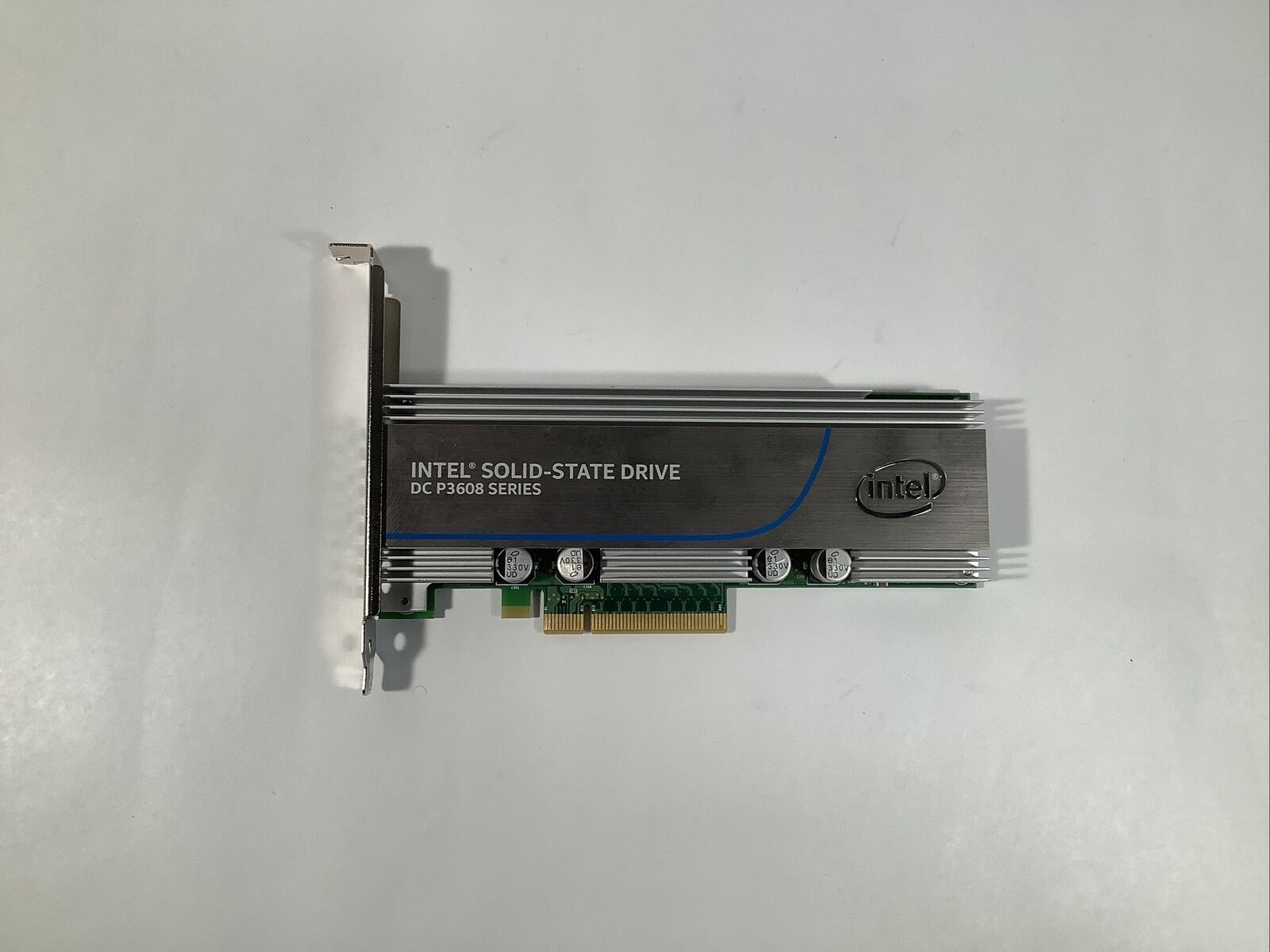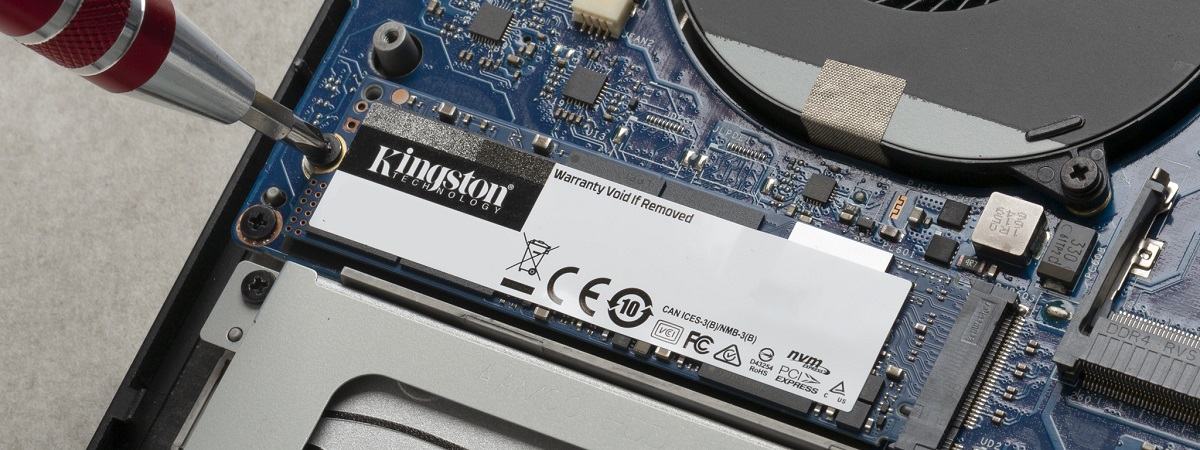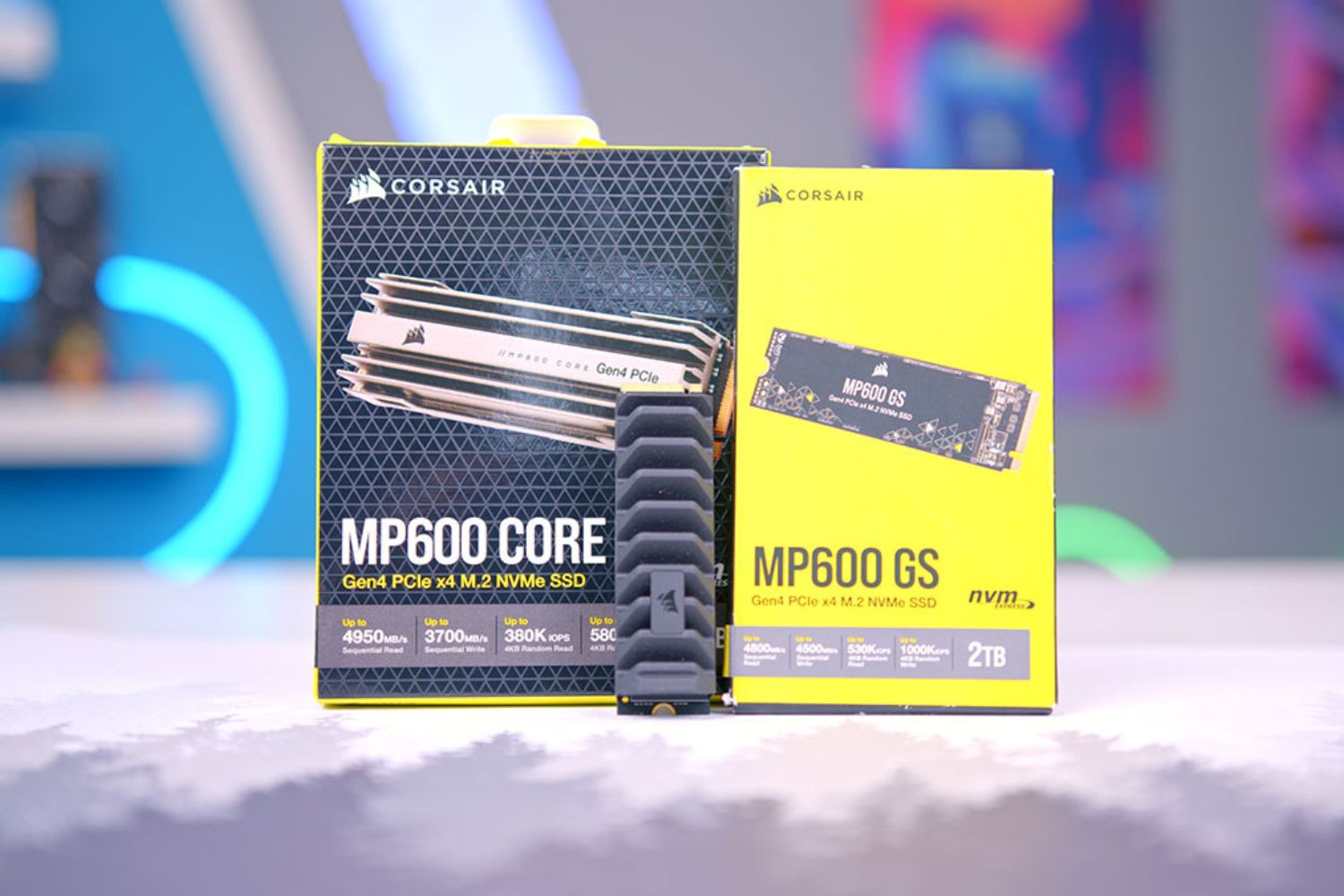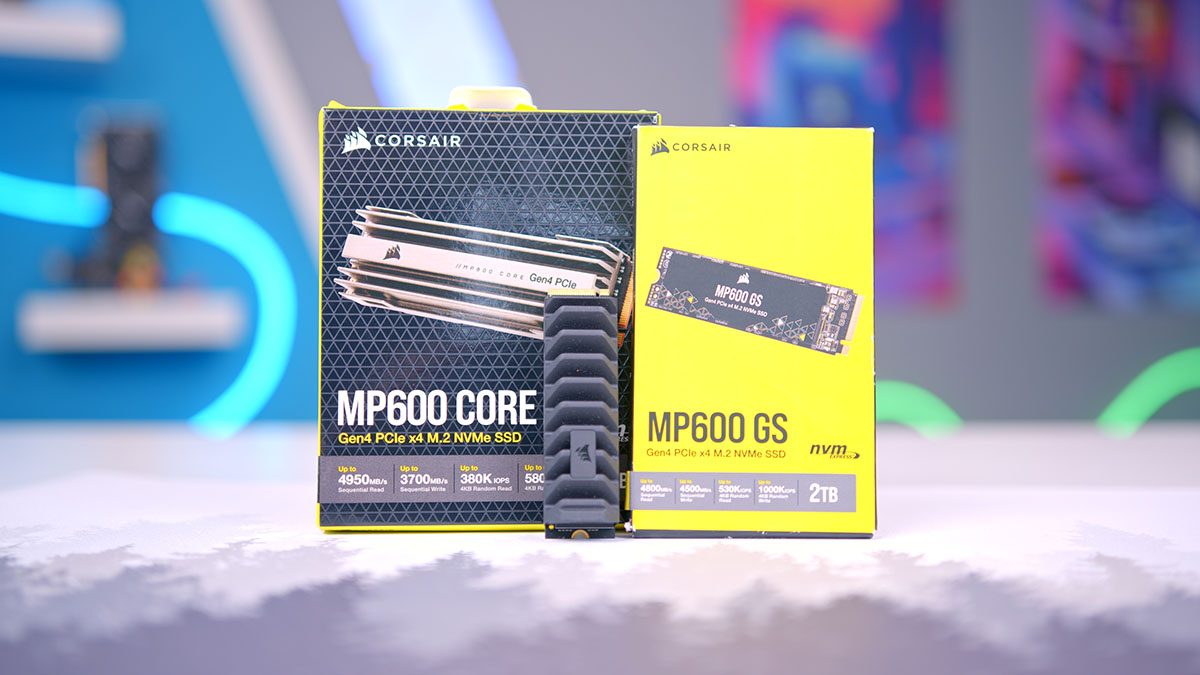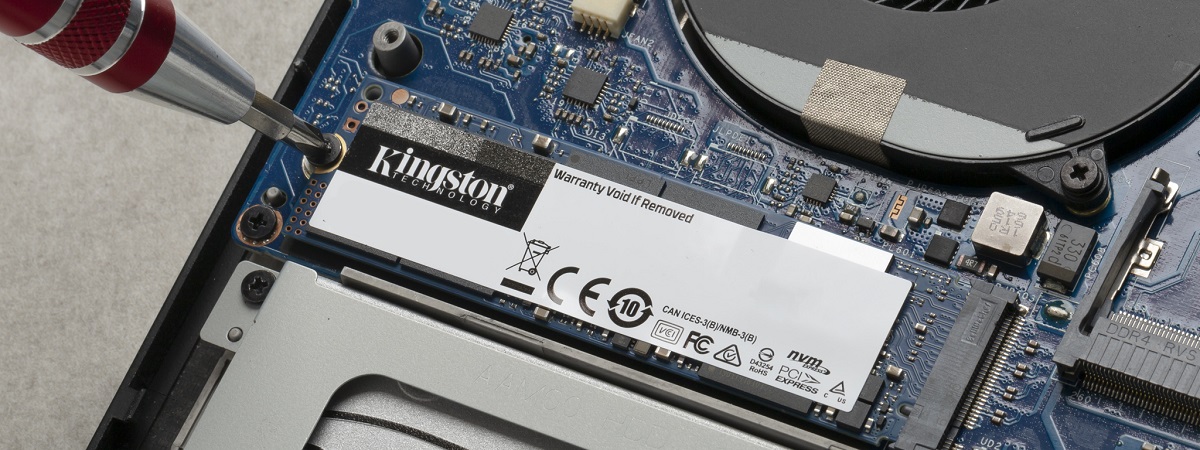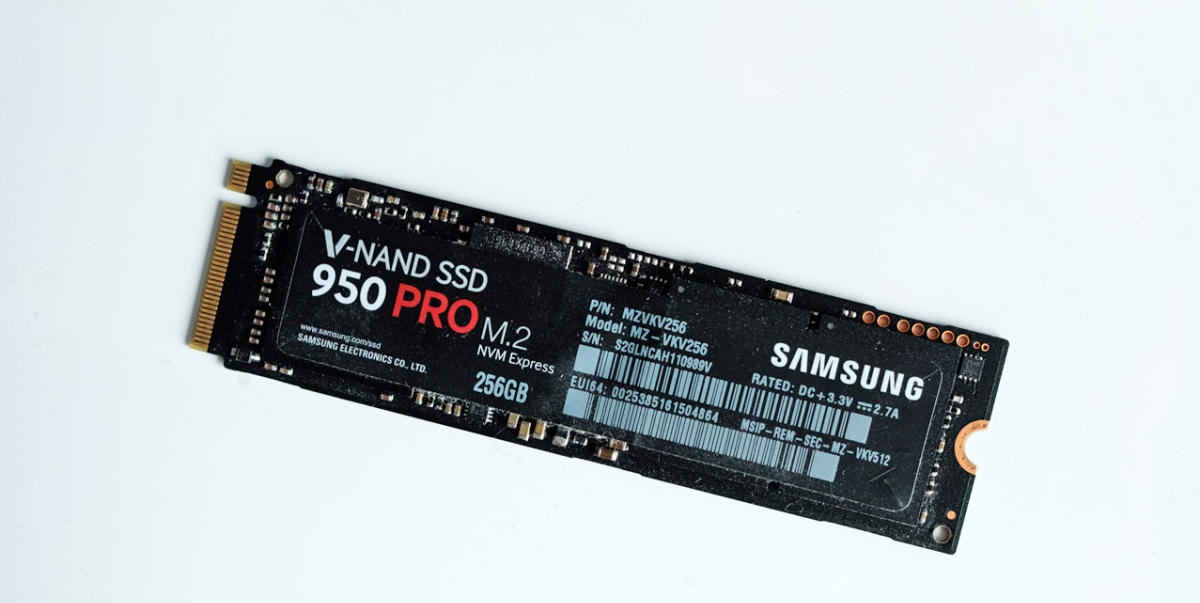Introduction
Welcome to the world of SSD PCIe, a revolutionary storage technology that has transformed the way we store and access data on our PC systems. In this fast-paced digital age, traditional storage devices like hard disk drives (HDDs) are gradually being replaced by faster and more efficient options, with SSD PCIe being at the forefront of this technological evolution.
SSD PCIe, short for Solid State Drive Peripheral Component Interconnect Express, offers unmatched speed, performance, and reliability, making it an ideal choice for everyone from casual users to hardcore gamers and professionals who demand lightning-fast data transfer speeds.
At its core, an SSD PCIe is a solid-state drive that connects directly to the PCIe (Peripheral Component Interconnect Express) interface on your motherboard. Unlike traditional hard drives that rely on spinning platters and mechanical read/write heads, SSD PCIe drives utilize flash memory chips to store and retrieve data, resulting in quicker access times and reduced latency.
With traditional storage options, such as HDDs, users often face frustratingly long boot times, delays in loading applications, and sluggish file transfers. However, with SSD PCIe, these delays are drastically reduced, giving you an instant and seamless computing experience.
So, why should you consider upgrading to SSD PCIe? The advantages are plentiful. Not only do you get lightning-fast read and write speeds, but SSD PCIe drives also offer greater durability, energy efficiency, and noiseless operation. Additionally, SSD PCIe drives are available in various capacities, allowing you to choose the one that suits your storage needs.
In this comprehensive article, we will delve deeper into the world of SSD PCIe, exploring different types of SSD PCIe, discussing the differences between SSD PCIe and other storage technologies, highlighting factors to consider when choosing an SSD PCIe drive, and addressing common FAQs. By the end of this article, you will have a clear understanding of SSD PCIe technology and the advantages it offers.
Definition and Explanation of SSD PCIe
SSD PCIe, which stands for Solid State Drive Peripheral Component Interconnect Express, is a cutting-edge storage device that connects directly to the PCIe interface on your computer’s motherboard. This technology eliminates the limitations of traditional hard disk drives (HDDs) and offers significantly faster data transfer speeds and improved overall performance.
Unlike HDDs, which use rotating magnetic platters and read/write heads to access and store data, SSD PCIe drives rely on flash memory technology. Flash memory is a non-volatile storage medium that retains data even when the power is turned off, making it highly reliable and efficient.
SSD PCIe drives have multiple NAND flash memory chips, which store data in small electrical cells. These cells are organized into pages, and the pages are collectively assembled into blocks. When data is read or written, the SSD PCIe controller manages the movement of data between the flash memory cells, ensuring efficient operations.
The PCIe interface, or Peripheral Component Interconnect Express, is a high-speed expansion bus that connects hardware devices, such as graphics cards, network adapters, and, in the case of SSDs, storage drives, directly to the computer’s motherboard. By connecting an SSD directly to the PCIe interface, the data transfer speeds are significantly increased, resulting in faster boot times, quicker application launches, and speedier file transfers.
SSD PCIe drives are available in different form factors, including M.2 and add-in card (AIC). M.2 SSDs are thin, compact, and are designed to be directly inserted into the M.2 slot on the motherboard. AIC SSDs, on the other hand, are larger and typically require an available PCIe slot.
With SSD PCIe drives, users can experience blistering read and write speeds, often reaching several gigabytes per second, which is multiple times faster than traditional HDDs. This enhanced speed not only improves overall system performance but also reduces loading times in applications, games, and operating systems.
Furthermore, SSD PCIe drives offer significant advantages in terms of reliability, energy efficiency, and noiseless operation. Since SSDs do not have any moving parts like the spinning platters and read/write heads of HDDs, they are less prone to mechanical failures. SSD PCIe drives also consume less power, contributing to lower energy costs and longer battery life in portable devices.
In summary, SSD PCIe is a state-of-the-art storage technology that provides lightning-fast data transfer speeds, improved performance, and increased reliability. By utilizing flash memory and connecting directly to the PCIe interface, SSD PCIe drives have revolutionized the storage landscape and have become the preferred choice for those seeking high-speed, efficient, and reliable storage solutions.
Advantages of SSD PCIe
SSD PCIe drives offer a host of advantages over traditional storage options like hard disk drives (HDDs). These advantages make them a popular choice for users looking to enhance their computer’s performance and storage capabilities. Let’s explore some of the key advantages of SSD PCIe:
- Lightning-Fast Speed: SSD PCIe drives are renowned for their exceptional data transfer speeds. With transfer rates reaching several gigabytes per second, SSD PCIe outperforms HDDs by a significant margin. This speed translates into faster boot times, quick application launches, and seamless multitasking.
- Improved Performance: The high-speed performance of SSD PCIe drives offers a significant boost to overall system performance. Applications load faster, files transfer swiftly, and the operating system feels more responsive. Whether you’re a gamer, creative professional, or a regular user, SSD PCIe can enhance your computing experience.
- Reliability and Durability: SSD PCIe drives are manufactured using solid-state technology, which means they have no moving parts. This makes them more resistant to physical shock and vibrations, reducing the risk of mechanical failure. Additionally, SSD PCIe drives have a longer lifespan compared to HDDs, making them a more reliable long-term storage solution.
- Energy Efficiency: SSD PCIe drives consume significantly less power compared to HDDs. This energy efficiency not only lowers your electricity costs but also helps prolong battery life in laptops and other portable devices. With SSD PCIe, you can enjoy longer battery life without compromising performance.
- Noiseless Operation: Unlike HDDs, which produce audible clicking and spinning noises, SSD PCIe drives operate silently. This noiseless operation creates a more peaceful and distraction-free computing environment.
- Compact Form Factor: SSD PCIe drives come in various form factors, including the compact M.2 design. This small form factor allows for easy installation, especially in slim laptops or mini-PCs where space may be limited.
- Scalability: SSD PCIe drives are available in a range of capacities, from a few hundred gigabytes to several terabytes. This wide range of storage options allows users to choose a drive that meets their specific storage needs without compromising performance.
- Compatibility: SSD PCIe drives are compatible with most modern computer systems and operating systems. They can be seamlessly integrated into desktops, laptops, and even servers, making them a versatile storage solution for various environments.
Overall, SSD PCIe drives offer unparalleled speed, improved performance, enhanced reliability, and other significant advantages over traditional storage options. Whether you’re a casual user, professional, or gamer, upgrading to an SSD PCIe drive can transform your computer’s performance and provide a seamless storage experience.
Types of SSD PCIe
SSD PCIe drives are available in different types, each with its own form factor, interface, and performance characteristics. Understanding the different types can help you choose the SSD PCIe drive that best suits your needs. Let’s explore the most common types of SSD PCIe:
- M.2 SSD: M.2 SSDs are compact, slim, and versatile storage solutions. They connect directly to the M.2 slot on the motherboard and offer high-speed performance. M.2 SSDs come in different lengths and widths, and they support various interface protocols, including PCIe and SATA. The PCIe-based M.2 SSDs offer faster speeds than their SATA counterparts, making them a popular choice for users seeking the ultimate performance.
- Add-In Card (AIC) SSD: AIC SSDs are expansion cards that are typically inserted into an available PCIe slot on the motherboard. These drives are larger in size compared to M.2 SSDs and can offer higher storage capacities. AIC SSDs are often used in gaming rigs and workstations that require extensive storage and top-tier performance.
- U.2 SSD: U.2 SSDs, also known as 2.5-inch PCIe SSDs, offer a larger form factor and can be connected to the motherboard using a U.2 connector. These drives resemble traditional 2.5-inch HDDs or SSDs but leverage the PCIe interface for faster speeds. U.2 SSDs are commonly used in enterprise-level storage systems and high-performance servers.
It’s important to consider the available slots and compatibility on your motherboard when choosing an SSD PCIe type. Not all motherboards support every type of SSD PCIe, so it’s crucial to ensure that your chosen SSD PCIe drive is compatible with your system.
Furthermore, it’s worth noting that different SSD PCIe drives within the same category may have varying performance levels. Factors such as the generation of PCIe interface, NAND flash memory technology, and controller chip can affect the speed and overall performance of an SSD PCIe drive.
Ultimately, the type of SSD PCIe you choose depends on your specific requirements, such as storage capacity, performance needs, and compatibility with your system. Whether you opt for an M.2 SSD, AIC SSD, or U.2 SSD, upgrading to an SSD PCIe drive will undoubtedly elevate your computing experience with lightning-fast speeds and improved performance.
Differences Between SSD PCIe and Other Storage Technologies
When it comes to storage technologies, SSD PCIe stands out from traditional options like hard disk drives (HDDs) and even other solid-state drives (SSDs). Let’s explore the key differences between SSD PCIe and other storage technologies:
- Speed and Performance: SSD PCIe drives offer significantly faster speeds and performance compared to HDDs and even SATA-based SSDs. With read and write speeds reaching several gigabytes per second, SSD PCIe outperforms other storage technologies, resulting in reduced load times, faster boot times, and smoother overall system performance.
- Interface and Connection: SSD PCIe drives connect directly to the PCIe (Peripheral Component Interconnect Express) interface on the motherboard, allowing for a high-bandwidth connection. On the other hand, HDDs rely on SATA (Serial Advanced Technology Attachment) interface and SSDs can use either SATA or PCIe interface, depending on the type. The PCIe interface provides a faster and more efficient data transfer path, giving SSD PCIe drives a significant advantage in terms of speed and performance.
- Form Factor: SSD PCIe drives are available in different form factors, including M.2, AIC, and U.2, offering flexibility in choosing the right drive for your system. In contrast, HDDs come in standard 3.5-inch or 2.5-inch form factors, while traditional SATA SSDs have a similar form factor to HDDs. The compact form factor of SSD PCIe drives allows for easier installation, especially in small form factor systems or laptops.
- Noise and Vibration: HDDs, being mechanical devices, produce noticeable noise and vibrations when in operation due to their spinning platters and read/write heads. In contrast, SSD PCIe drives have no moving parts, resulting in silent operation and eliminating any noise or vibrations associated with traditional hard drives.
- Resistance to Physical Shock: HDDs are more susceptible to physical shock and can experience mechanical failures or data loss if exposed to excessive shocks or vibrations. SSD PCIe drives, being solid-state devices, are more resistant to shocks and vibrations, making them a more reliable choice, especially for portable devices.
- Energy Efficiency: SSD PCIe drives consume less power compared to HDDs. They require less energy for operation and generate less heat. This not only reduces your electricity costs but also contributes to longer battery life in laptops and other portable devices.
- Pricing: Historically, SSD PCIe drives have been more expensive compared to HDDs and SATA-based SSDs. However, as technology advances and becomes more widely adopted, the prices of SSD PCIe drives have become more competitive. Although still generally more expensive, the performance benefits and overall improvement in system experience justify the investment for many users.
These differences highlight the superiority of SSD PCIe drives in terms of speed, performance, reliability, and efficiency compared to other storage technologies. The unique combination of high-speed data transfer, low power consumption, and silent operation make SSD PCIe the preferred choice for users seeking the best storage solution for their computing needs.
Factors to Consider When Choosing SSD PCIe
Choosing the right SSD PCIe drive for your system involves considering several important factors. Taking these factors into account will ensure that you select an SSD PCIe drive that meets your specific needs and maximizes the performance benefits. Let’s explore the key factors to consider:
- Capacity: Assess your storage requirements and choose an SSD PCIe drive with sufficient capacity. SSD PCIe drives are available in various sizes, ranging from several hundred gigabytes to multiple terabytes. Consider the types of files you work with and the amount of storage space they require, including the operating system, applications, games, and media files.
- Performance: Consider the performance characteristics you need for your specific use case. Look for SSD PCIe drives with high read and write speeds, as well as low latency. High-performance drives will ensure quick boot times, faster application loading, and smooth multitasking.
- Form Factor: Ensure compatibility with your system by choosing the correct form factor. SSD PCIe drives come in different sizes and shapes, such as M.2, AIC, or U.2. Check your motherboard’s specifications to determine which form factors are supported, as well as the available slots.
- Interface: Check whether your motherboard supports the PCIe interface version of the SSD PCIe drive you are considering. The PCIe interface is backward compatible, meaning newer SSD PCIe drives can work with older PCIe slots, but it’s important to ensure compatibility to maximize performance benefits.
- Endurance and Durability: Consider the endurance rating of the SSD PCIe drive, which indicates its lifespan in terms of data rewriting. Higher endurance ratings are generally desirable, especially for heavy workloads or applications that involve frequent data writing. Additionally, look for SSD PCIe drives that offer features like power loss protection and error correction to enhance data integrity.
- Price: Consider your budget when selecting an SSD PCIe drive. While SSD PCIe drives tend to be more expensive than traditional HDDs and even SATA-based SSDs, the price has become more competitive. Assess the performance benefits and features of the SSD PCIe drive relative to its cost to ensure you’re making a worthwhile investment.
- Reliability and Warranty: Look for SSD PCIe drives from reputable brands known for their reliability and customer support. Check the warranty period offered by the manufacturer, as it can be an indication of the drive’s expected lifespan and the manufacturer’s confidence in its reliability.
By considering these factors, you can make an informed decision and choose an SSD PCIe drive that aligns with your storage needs and system requirements. Whether you’re a gamer, professional, or everyday user, selecting the right SSD PCIe drive will greatly enhance your system’s performance and provide a seamless storage experience.
Installation and Compatibility of SSD PCIe
Installing an SSD PCIe drive requires careful consideration of compatibility with your system and proper installation procedures. Here are some key points to keep in mind:
- Check Compatibility: Before purchasing an SSD PCIe drive, verify that your motherboard supports the specific form factor and interface of the drive. Consult your motherboard’s user manual or visit the manufacturer’s website to ensure compatibility.
- Form Factor and Slot: Depending on the form factor of the SSD PCIe drive, ensure that your system has the appropriate slot available. M.2 SSDs require an M.2 slot, while AIC SSDs require an available PCIe slot. U.2 SSDs utilize a U.2 connector on the motherboard. Check the documentation of your motherboard to identify the slots and their specifications.
- BIOS and Firmware Updates: In some cases, BIOS or firmware updates may be necessary to support certain SSD PCIe drives. Check the manufacturer’s website for any available updates and follow the instructions carefully to ensure proper functionality.
- Mounting and Connection: Depending on the form factor, the installation process may vary. For M.2 SSDs, the drive is typically secured into the M.2 slot with a screw, while AIC SSDs are inserted into an available PCIe slot. Follow the manufacturer’s instructions for proper mounting and connection of the SSD PCIe drive.
- Software Configuration: Once the SSD PCIe drive is physically installed, you may need to access the system BIOS or UEFI to configure the boot order. Set the SSD PCIe drive as the primary boot device to ensure the operating system starts from the newly installed SSD.
- Data Migration or Fresh Installation: If you are upgrading from an existing storage drive, you have the option to either migrate your data from the old drive to the SSD PCIe or perform a fresh installation of the operating system. Depending on your needs, use appropriate software or follow installation guides for a seamless transition.
- Drivers and Optimization: After installation, ensure you have the latest drivers for your SSD PCIe drive. Check the manufacturer’s website for any available driver updates and install them accordingly. Additionally, consider enabling any recommended optimizations or settings to maximize the performance and lifespan of the SSD PCIe drive.
It is essential to consult the documentation provided by the SSD PCIe drive manufacturer and your system’s motherboard manufacturer for specific installation instructions and compatibility considerations.
By taking proper precautions, following the installation process, and ensuring compatibility, you can successfully install an SSD PCIe drive in your system. The enhanced speed and performance of an SSD PCIe drive will significantly improve your computing experience and provide a seamless storage solution.
Common FAQs about SSD PCIe
As SSD PCIe drives gain popularity, users often have questions and concerns. Here are some frequently asked questions about SSD PCIe:
- What is the difference between SSD PCIe and SATA SSD?
- Can I use an SSD PCIe drive with an older motherboard?
- Are SSD PCIe drives compatible with laptops?
- Do I need to align my SSD PCIe drive?
- Can I upgrade my existing storage drive to an SSD PCIe drive?
- Are there any special maintenance requirements for SSD PCIe drives?
- Can I use an SSD PCIe drive for gaming?
- Are SSD PCIe drives reliable?
SSD PCIe drives connect directly to the PCIe interface on your motherboard, offering faster data transfer speeds compared to SATA SSDs. PCIe SSDs utilize the high-bandwidth PCIe lanes, resulting in significantly improved performance.
Yes, SSD PCIe drives are backward compatible with older motherboards that have an available PCIe slot. However, make sure to check the specific PCIe version compatibility to ensure optimal performance.
Yes, many modern laptops support M.2 PCIe SSDs. However, it is crucial to check the specifications and compatibility of your laptop before purchasing an SSD PCIe drive.
No, unlike HDDs, SSD PCIe drives do not require any alignment. You can simply install the drive and follow the proper installation procedures.
Yes, you can replace your existing storage drive with an SSD PCIe drive. However, make sure to back up your data and follow the appropriate migration or installation process to ensure a smooth transition.
SSD PCIe drives require minimal maintenance. However, it is recommended to keep the firmware up to date and periodically run health checks using manufacturer-provided software for optimal performance and lifespan.
Absolutely! SSD PCIe drives are excellent for gaming and offer significant performance improvements in terms of decreased load times, faster game installations, and seamless gameplay.
SSD PCIe drives are highly reliable due to their solid-state nature, lack of moving parts, and advanced error correction technologies. Additionally, reputable manufacturers often provide warranties as a testament to their reliability and quality.
It is important to note that specific details and compatibility may vary depending on the manufacturer and specific model of the SSD PCIe drive. It is always recommended to consult the manufacturer’s documentation and support for any specific concerns or questions.
By addressing these common FAQs, users can gain a better understanding of SSD PCIe drives and make informed decisions when it comes to upgrading their storage solutions.
Conclusion
SSD PCIe drives have revolutionized the storage landscape, offering lightning-fast speeds, improved performance, and enhanced reliability compared to traditional storage options. With their direct connection to the PCIe interface, SSD PCIe drives provide an unrivaled storage experience for gamers, professionals, and everyday users alike.
Throughout this article, we have explored the definition and explanation of SSD PCIe, delved into its advantages over other storage technologies, discussed the various types of SSD PCIe drives available, examined the differences between SSD PCIe and other storage options, highlighted factors to consider when choosing an SSD PCIe drive, and addressed common FAQs.
SSD PCIe drives offer exceptional performance benefits, with lightning-fast read and write speeds, reduced latency, improved multitasking capabilities, and seamless system responsiveness. With no moving parts, SSD PCIe drives also boast enhanced durability and reliability, making them ideal for portable devices and environments prone to physical shock.
Installation of an SSD PCIe drive requires careful consideration of compatibility with your system and adherence to proper installation procedures. It is essential to consult the documentation provided by the drive manufacturer and your motherboard manufacturer to ensure a successful and error-free installation.
When choosing an SSD PCIe drive, evaluate factors such as capacity, performance, form factor, interface, endurance, and price to find the drive that best meets your specific needs and budget. SSD PCIe drives are available in various form factors, including M.2, AIC, and U.2, offering flexibility in installation options.
As SSD PCIe drives continue to evolve and become more affordable, they are becoming the go-to storage solution for users seeking exceptional speed, reliability, and performance. Whether you are a gamer looking for reduced load times and seamless gameplay, a professional needing faster data transfer for intensive tasks, or an everyday user seeking a more responsive computing experience, upgrading to an SSD PCIe drive is a worthwhile investment.
In conclusion, SSD PCIe drives have revolutionized the storage industry, offering unparalleled speed, performance, reliability, and efficiency. Embrace the power of SSD PCIe and transform your computing experience with lightning-fast data transfers, reduced load times, and improved overall system responsiveness.







